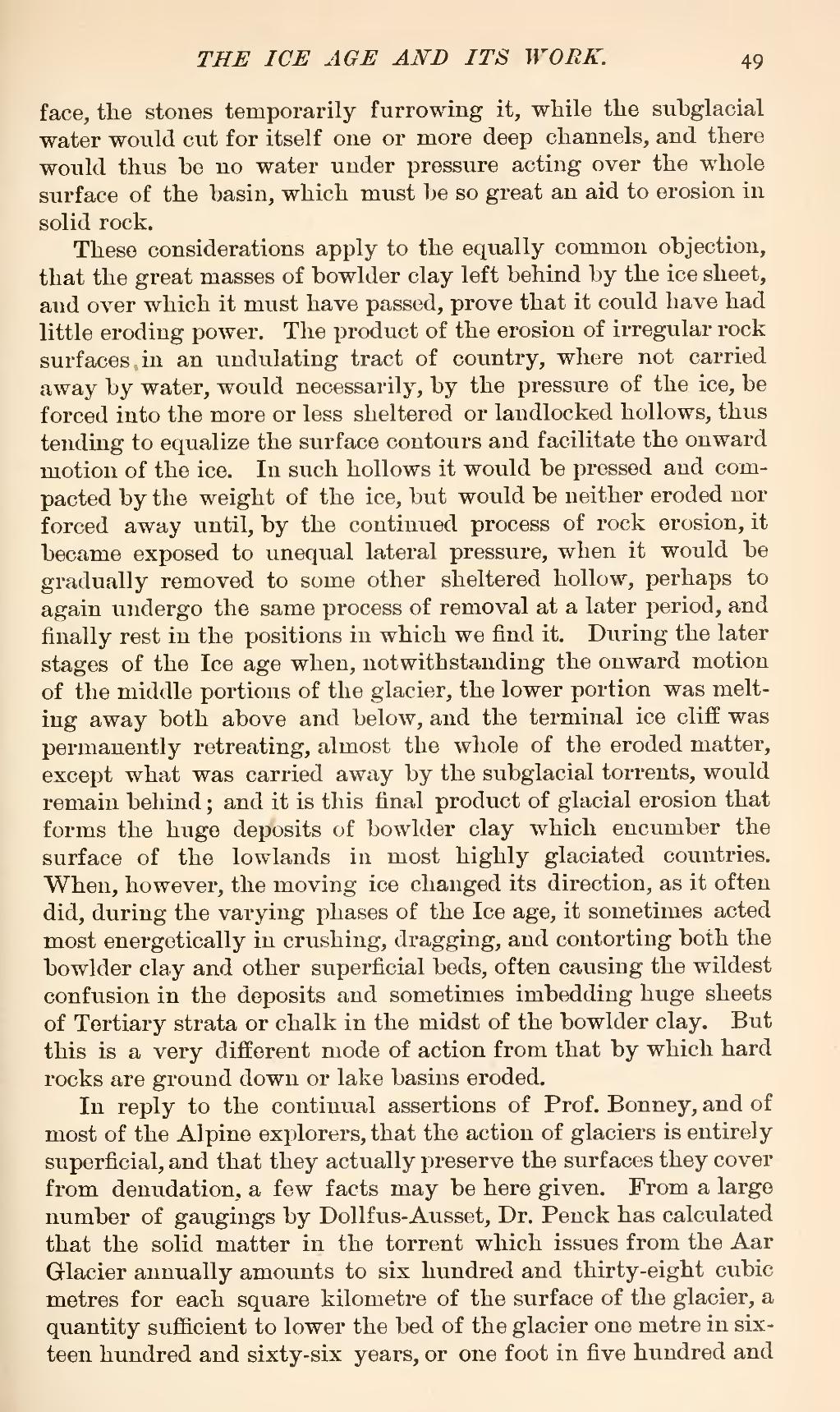face, the stones temporarily furrowing it, while the subglacial water would cut for itself one or more deep channels, and there would thus be no water under pressure acting over the whole surface of the basin, which must be so great an aid to erosion in solid rock.
These considerations apply to the equally common objection, that the great masses of bowlder clay left behind by the ice sheet, and over which it must have passed, prove that it could have had little eroding power. The product of the erosion of irregular rock surf aces, in an undulating tract of country, where not carried away by water, would necessarily, by the pressure of the ice, be forced into the more or less sheltered or landlocked hollows, thus tending to equalize the surface contours and facilitate the onward motion of the ice. In such hollows it would be pressed and compacted by the weight of the ice, but would be neither eroded nor forced away until, by the continued process of rock erosion, it became exposed to unequal lateral pressure, when it would be gradually removed to some other sheltered hollow, perhaps to again undergo the same process of removal at a later period, and finally rest in the positions in which we find it. During the later stages of the Ice age when, notwithstanding the onward motion of the middle portions of the glacier, the lower portion was melting away both above and below, and the terminal ice cliff was permanently retreating, almost the whole of the eroded matter, except what was carried away by the subglacial torrents, would remain behind; and it is this final product of glacial erosion that forms the huge deposits of bowlder clay which encumber the surface of the lowlands in most highly glaciated countries. When, however, the moving ice changed its direction, as it often did, during the varying phases of the Ice age, it sometimes acted most energetically in crushing, dragging, and contorting both the bowlder clay and other superficial beds, often causing the wildest confusion in the deposits and sometimes imbedding huge sheets of Tertiary strata or chalk in the midst of the bowlder clay. But this is a very different mode of action from that by which hard rocks are ground down or lake basins eroded.
In reply to the continual assertions of Prof. Bonney, and of most of the Alpine explorers, that the action of glaciers is entirely superficial, and that they actually preserve the surfaces they cover from denudation, a few facts may be here given. From a large number of gaugings by Dollfus-Ausset, Dr. Penck has calculated that the solid matter in the torrent which issues from the Aar Glacier annually amounts to six hundred and thirty-eight cubic metres for each square kilometre of the surface of the glacier, a quantity sufficient to lower the bed of the glacier one metre in sixteen hundred and sixty-six years, or one foot in five hundred and

